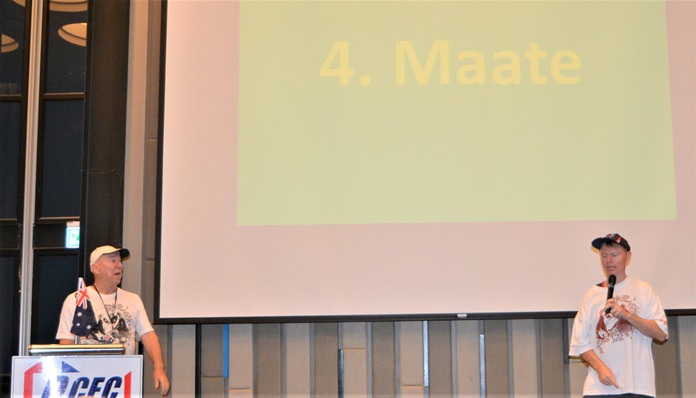
“Aussie, Aussie, Aussie” followed by “Oi, Oi, Oi” was how the Sunday, January 28, meeting started for the Pattaya City Expats Club. Four of the Club’s Australian members were the presenting team. The team explained the presentation for the meeting was in celebration of Australia Day, though a couple days late as it is on January 26 of each year. Further, the shout was a cry often heard at Australian sporting events. To get things going and put everyone in the mood to be an Aussie for a day, the room was divided in half and then each side separately gave the shout; the side that won, then repeated the shout table by table, with the loudest table receiving a few prizes.
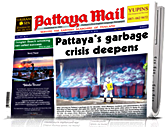 It was also explained that Australians were well known for having many English words shortened such as the common greeting of G’day Maate instead of fully pronouncing out “Good Day Mate,” thus Australians tend to have more slang words than other countries. This was demonstrated when the presenters were introduced as Ren (Lubra Lips) Lexander; Roy (Maccas) Albiston, Ann (Top Sheila) Cahill, and Stuart (Flossie) Saunders. Just in case you are wondering about the Aussie slang: ‘Lubra Lips’ refers to Ren’s generous sized lips; ‘Maccas’ because Roy once worked for MacDonald’s Corporation and ‘Top Sheila’ because Anne is considered a good humored and caring lady.
It was also explained that Australians were well known for having many English words shortened such as the common greeting of G’day Maate instead of fully pronouncing out “Good Day Mate,” thus Australians tend to have more slang words than other countries. This was demonstrated when the presenters were introduced as Ren (Lubra Lips) Lexander; Roy (Maccas) Albiston, Ann (Top Sheila) Cahill, and Stuart (Flossie) Saunders. Just in case you are wondering about the Aussie slang: ‘Lubra Lips’ refers to Ren’s generous sized lips; ‘Maccas’ because Roy once worked for MacDonald’s Corporation and ‘Top Sheila’ because Anne is considered a good humored and caring lady.
However, for Stuart, the Club’s resident inventor, the team came up with his nick name because of his invention, manufacture, and sale of a credit card size dental floss dispenser.
It was pointed out that January 26, Australia Day, marks an important date in Australia’s history and has evolved from a celebration for emancipated convicts into what is now a celebration of Australia that reflects the nation’s diverse people. Today, Australia Day is an established and significant day in the national calendar.
Captain James Cook raised the Union Jack on what is now called Possession Island on 22nd August 1770 to claim the eastern half of the continent as New South Wales for Great Britain. Eight years later on 26th January 1778, Captain Arthur Phillip, commander of the first fleet of eleven convict ships from Great Britain, and the first Governor of New South Wales, arrived at Sydney Cove and raised the Union Jack to signal the beginning of the colony.
Australia is huge! This was pointed out when they displayed an outline of Australia superimposed on a map of Europe as well as a map of North America. In each case, Australia covered most of each. So, there is nothing small about Australia, except its relative population. As the 6th largest nation in the world, Australia has a very low population density of just 3 people per square kilometer compared to 274 in the UK and 31 in the USA. Likewise, an overlay of the Great Barrier Reef on to Europe would stretch from Belgium to the end of the boot of Italy.
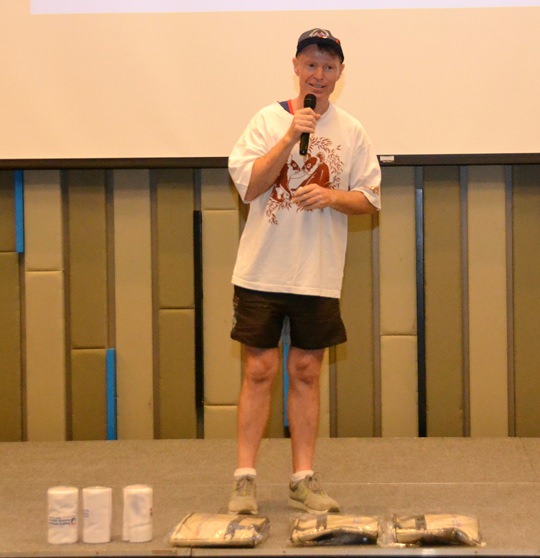
The team also said there are 8,222 islands around Australia. Further, you could be forgiven for immediately thinking of Kiwi (New Zealand) as Australia’s closest neighbor. Well it is closer to the east coast of Australia than Perth is but is not the closest neighbor. You might even name Indonesia. However, you would be wrong again. The answer is that the largely forgotten neighboring country is only 3.7 kilometers away from Australian soil at its nearest point; this is Papua, New Guinea. It takes just an hour to fly from Cairns to Port Moresby and it is three hours from Brisbane.
Another feature is the diverse creatures and plants that live on the Australian continent and cannot be found anywhere else! In fact, Australia and the surrounding islands are the only places in the world where you can find marsupials. It is also home to redback and funnel-web spiders, blue-ringed octopus, taipan, tiger snake, box jellyfish, stonefish and big shark. It is home to 9 of the 10 most dangerous snakes in the world. This was demonstrated when the team played a YouTube video with pictures to accompany a very lyrical song called Deadly Animals (Come to Australia).
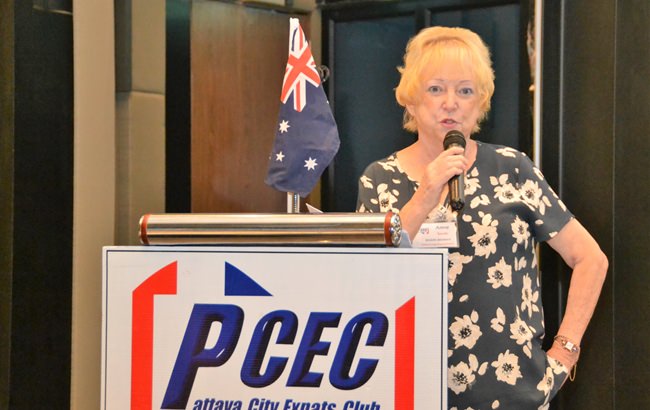
Australia also has its war time history. On April 25 of each year, another day is celebrated as Anzac (Australian and New Zealand Army Corps) Day. On the 25th of April 1915, Australian and New Zealand soldiers formed part of the allied expedition that set out to capture the Gallipoli peninsula during WWI. During WWII, construction of the Thailand-Burma Railway began on September 16, 1942. Though records are sketchy, approximately 61,000 Allied prisoners of war are believed to have labored on the railway, including 13,000 Australian soldiers. An estimated 16,000 troops died, many of them from diseases.
Australian Club member Stuart Saunders took the podium to explain that Australians can be an ingenious bunch. He cited several excellent inventions to have come from “down under” (slang for Australia). He mentioned: 1) Black box flight recorder invented by Australian scientist Dr David Warren, 2) Spray-on skin in 1999 by Perth-based plastic surgeon Professor Fiona Wood, 3) Australian doctor Mark Lidwill and physicist Edgar Booth developed the first artificial pacemaker in the 1920s, 4) Medical application of penicillin in 1939, Australian scientist Howard Florey purified penicillin from a special strain of mold, and 5) in 1992, John O’ Sullivan and the CSIRO developed Wi-Fi technology.
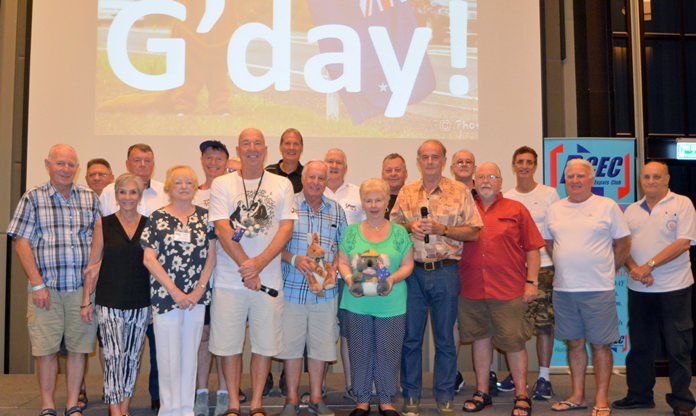
After the presentation, MC Roy Albiston brought everyone up to date on upcoming events. This was followed by the “Open Forum” portion of the meeting, where questions are asked and answered and comments made about expat living in Thailand. For more information on the Club and their activities, visit www.pcec.club.





